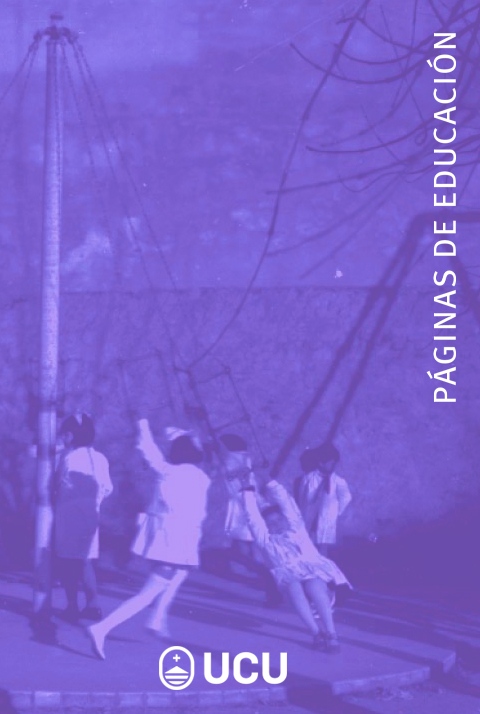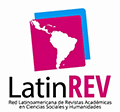Teaching Practices in The Teaching of the Lower Skills of Writing
DOI:
https://doi.org/10.22235/pe.v15i2.2774Keywords:
writing, strategies, lower skills, motor patternsAbstract
The development of lower skills is important for the learning of writing, since the generation of text can reach a better standard when there is a greater mastery and automation of these skills. The objective of this study is to analyze teaching practices in the development of lower skills involved in writing in first grade students. A mixed methodology was developed, with a first quantitative phase and a second qualitative phase. In the first phase, 19 teachers were surveyed to characterize the teaching and feedback strategies they use to promote lower skills in writing. The second phase sought to understand the reasons for using certain strategies through semi-structured interviews with 6 participants. The results indicated that the practices are characterized by being traditional, that teachers use linked handwriting to teach writing, that the activity to which they dedicate the most time is calligraphy, that to automate writing they use a static image with movement instruction, that the resource most used by teachers is the Caligrafix workbook, and that they use evaluative feedback. Finally, the reasons why teachers use certain strategies are conditioned by the imposition of management teams and by tradition.
Downloads
References
Anavalón, K. (2013). El libro Caligrafía horizontal 1° básico. Caligrafix.
Bañales, G., Ahumada, S., Martínez, R., Martínez, M., & Messina, P. (2018). Investigaciones de la escritura en la Educación Básica en Chile: revisión de una década (2007-2016). RLA. Revista de lingüística teórica y aplicada, 56(1), 59-84. https://doi.org/10.4067/s0718-48832018000100059
Berninger, V. W. (1999). Coordinating transcription and text generation in working memory during composing: Automatic and constructive processes. Learning Disability Quarterly, 22(2), 99-112. https://doi.org/10.2307/1511269
Berninger, V., Yates, C., Cartwright, A., Rutberg, J., Remy, E., & Abbott, R. (1992). Lower-level developmental skills in beginning writing. Reading and Writing, 4(3), 257-280.
Bigas, M., & Correig, M. (2008). Didáctica de la lengua en la educación infantil. Síntesis Educación.
Burnett, P., & Mandel, V. (2010). Praise and Feedback in the Primary Classroom: Teachers’ and Students’ Perspectives. Australian Journal of Educational & Developmental Psychology, (10), 145-154.
Cuetos, V. F. (2009). Psicología de la escritura. Wolters Kluwer.
Espinosa Aguirre, M. J. (2018). Enseñanza de la escritura en la escuela: Qué, cómo y por qué enseñan así los docentes [Tesis de grado. Universidad Diego Portales; Universidad Alberto Hurtado]. https://repositorio.uahurtado.cl/handle/11242/24204
Gibbs, G. (2012). El análisis de datos en investigación cualitativa. Morata.
Graham, S., & Weintraub, N. (1996). A review of handwriting research: Progress and prospects from 1980 to 1994. Educational Psychology Review, 8(1), 7–87. https://doi.org/10.1007/BF01761831
Graham, S., Berninger, V. W., Abbott, R. D., Abbott, S. P., & Whitaker, D. (1997). Role of mechanics in composing of elementary school students: A new methodological approach. Journal of Educational Psychology, 89(1), 170-182. https://doi.org/10.1037/0022-0663.89.1.170
Harris, L., Irving, S., & Peterson, E. (2008, diciembre). Secondary teachers’ conceptions of the purpose of assessment and feedback. Presentado en el Annual Conference of the Australian Association for Research in Education, Brisbane, Australia.
Hayes, J. R., & Flower, L. (1980). Identifying the Organization of Writing Processes. En L. W. Gregg & E. R. Steinnberg (Eds.), Cognitive Processes in Writing. An Interdisciplinary Approach (pp. 3-30). Lawrence Erlbaum.
Hernández-Sampieri, R., & Mendoza, C. P. (2008). El matrimonio cuantitativo cualitativo: el paradigma mixto. Presentado en el 6º Congreso de Investigación en Sexología. Instituto Mexicano de Sexología; Universidad Juárez Autónoma de Tabasco, Villahermosa, Tabasco, México.
Hernández-Sampieri, R., & Torres, C. P. M. (2018). Metodología de la investigación (Vol. 4). McGraw-Hill Interamericana.
Kim, Y. S., Al Otaiba, S., Puranik, C., Folsom, J. S., Greulich, L., & Wagner, R. K. (2011). Componential skills of beginning writing: An exploratory study. Learning and individual differences, 21(5), 517-525. https://doi.org/10.1016%2Fj.lindif.2011.06.004
Politis, D. G., & Kurlat, V. L. (2005). Alteraciones de la programación motora de la escritura. Revista Española de Neuropsicología, 7(2), 99-115.
Ledesma, M. (2010). Ventajas y desventajas del uso simultáneo y único de las letras script y cursiva en los niños y niñas de segundo año, de las escuelas Juan Montalvo y San Antonio, en el desarrollo de las destrezas escritoras, durante el año lectivo 2008- 2009. [Tesis de Maestría, Universidad Tecnológica Equinoccial]. http://repositorio.ute.edu.ec/handle/123456789/12607
Limpo, T. & Graham, S. (2020). The Role of Handwriting Instruction in Writers’ Education. British Journal of Educational Studies, 68(3). https://doi.org/10.1080/00071005.2019.1692127
Lurçat, L. (1982). Pintar, dibujar, escribir, pensar. El grafismo en el preescolar. Cincel.
McCutchen, D. (2011). From novice to expert: Implications of language skills and writing-relevant knowledge for memory during the development of writing skill. Journal of Writing Research, 3(1), 51 68. https://doi.org/10.17239/jowr-2011.03.01.3
Montessori, M. (2003). The Montessori Method. Barnes y Noble. (Trabajo original publicado en 1912).
Muñoz, M. (2017). Retroalimentación a la escritura en actividades con foco en lo grafomotor durante la transición de kínder a primero básico en escuelas públicas de la comuna de concepción [Tesis doctoral inédita]. Universidad Católica de Chile, Santiago, Chile.
Muñoz-Abrines, M. L. (2020). La instrucción del movimiento durante actividades de copia con escritores y escritoras principiantes. Revista Electrónica Educare, 24(2), 527-539. https://doi.org/10.15359/ree.24-2.26.
Nelson, R. H., & Trafford, C. H. (2003). Handwriting: a complete guide to instruction. Peterson Directed Handwriting.
Newman, I., Ridenour, C. S., Newman, C., & DeMarco, G. M. P. (2002). A typology of research purposes and its relationship to mixed methods. En A. Tashakkori & C. Teddlie (Eds.), Handbook of Mixed Methods in the Social and Behavioural Research (pp. 167-188). Sage.
Nicasio, J. (1995). Manual de dificultades de aprendizaje. Lenguaje, lectoescritura y matemáticas. Narcea.
Puranik, C., Al Otaiba, S. (2012). Examining the contribution of letter writing fluency and spelling to composition in kindergarten children. Reading and Writing: An Interdisciplinary Journal, 25(7), 1523-1546. https://doi.org/10.1007/s11145-011-9331-x
Ribera, P., Villagrasa, M. R., & López Jiménez, S. (2015). La escritura: cómo conseguir un buen grafismo. Prevención y atención de sus dificultades en el aula. Grao educación.
Sánchez Abchi, V., & Borzone, A. (2010). Enseñar a escribir textos: Desde los modelos de escritura a la práctica en el aula. Lectura y Vida. Revista Latinoamericana de Lectura, 31(1), 40-49. http://www.lecturayvida.fahce.unlp.edu.ar/numeros/a31n1/31_01_Sanchez.pdf
Sánchez Abchi, V., Moyano, V., & Borzone, A. (2011). Demandas cognitivas de la escritura: comparación de dos situaciones de producción. Estudios pedagógicos, (37), 227-236. https://doi.org/10.4067/S0718-07052011000100012
Stobart, G. (2006). The validity of formative assessment. In J. Gardner (Ed.), Assessment and learning (pp. 133-146). Sage.
Torrance, M., & Galbraith, D. (2006). The Processing Demands of Writing. In C. A. MacArthur, S. Graham, & J. Fitzgerald (Eds.), Handbook of writing research (pp. 67–80). The Guilford Press.
Vander Hart, N., Fitzpatrick, P., & Cortesa, C. (2010). In-depth analysis of handwriting curriculum and instruction in four kindergarten classrooms. Reading and Writing: An Interdisciplinary Journal, 23(6), 673–699. https://doi.org/10.1007/s11145-009-9178-6
Wagner, R. K., Puranik, C. S., Foorman, B., Foster, E., Wilson, L. G., Tschinkel, E., & Kantor, P. T. (2011). Modeling the development of written language. Reading and writing, 24(2), 203-220. https://doi.org/10.1007/s11145-010-9266-7
Downloads
Published
How to Cite
Issue
Section
License
Copyright (c) 2022 Páginas de Educación

This work is licensed under a Creative Commons Attribution 4.0 International License.















